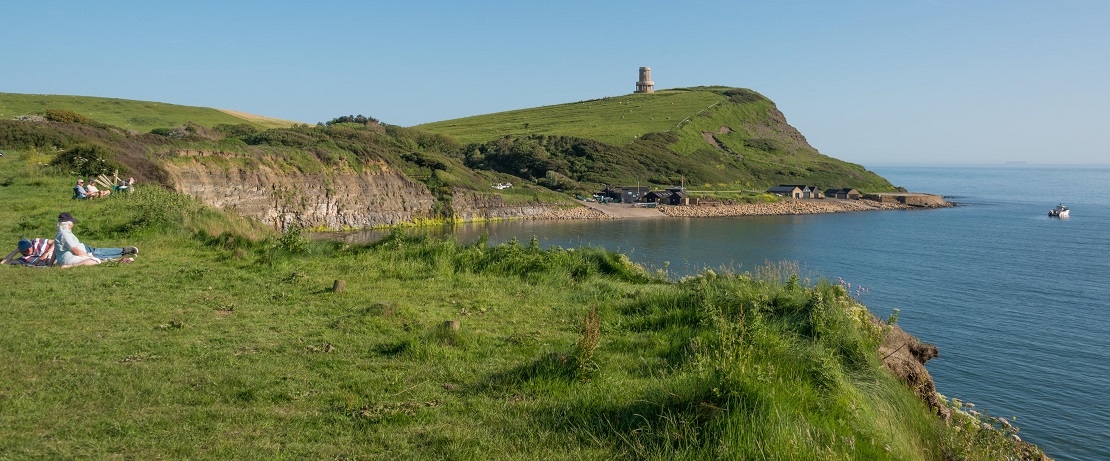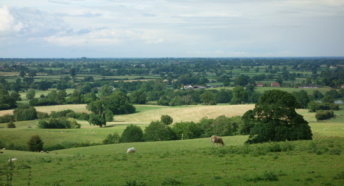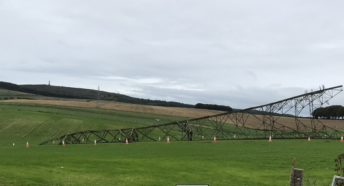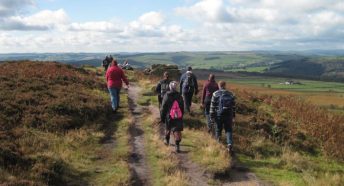Sounding the alarm on disappearing natural beauty
New analysis by CPRE has found that local authorities are increasingly planning major developments in AONBs, largely consisting of executive-style housing – with only 16% classed as affordable. We’ve found government pressure to increase housing numbers is forcing local authorities to prioritise new building over landscape protection.
In calling for special controls over development in areas of ‘special beauty’, CPRE’s founding manifesto of 1926 marked the origins of our campaign for protected landscapes.
By 1949, we’d helped bring about the National Parks Act – which also allowed for the creation of Areas of Outstanding Natural Beauty (AONBs) to safeguard landscapes deemed not wild or large enough for National Park status, but considered equally beautiful. Beginning with the designation of the Quantocks AONB in 1956, 34 AONBs (covering 15% of England) have put natural beauty within 30 minutes of two-thirds of the population.
Worrying trends
Thanks to previous CPRE lobbying, government planning guidance recommends that ‘major development’ on AONB land should only happen under exceptional circumstances, and only when it can be demonstrated that it is in the public interest. But our new research has found that local authorities are increasingly allowing development in AONBs.
Government pressure to increase housing numbers is completely undermining AONBs’ legal purpose to ‘conserve and enhance natural beauty’. Every year since 2017/2018, we’ve seen an average of 1,670 housing units approved in AONBs – representing an annual loss of 119 hectares of supposedly protected landscape.
While these housing numbers constitute a 27% increase on the previous five year period (from 2012-17), the amount of countryside they are being built on has more than doubled (up by 129%), indicating an increasingly wasteful use of land. In fact, our research found that greenfield developments in AONBs are using up twice as much land as the national average in providing just 16 dwellings per hectare.
Despite their inherent unsustainability, we found that 80% of planning applications on greenfield AONB land are given permission, flying in the face of planning guidelines. This success rate is encouraging further speculative applications: 967 were submitted in the first five months of 2020/21, putting it on course for the highest annual total since 2017/18.
High housing pressure is also having a major impact on the landscape ‘setting’ of AONBs, with 27,857 housing units approved for building within 500 metres of their boundaries in the past five years – an increase of 135% on 2012-17.
Targeting the south
We identified a particularly intense pressure on these landscapes in the south east and south west of England, which are accommodating 85% of the national total of homes planned for AONBs.
The Dorset and Chilterns AONBs – both recommended for National Park status by the government’s independent Glover Review of landscapes – have both seen 771 housing units on greenfield land approved since 2017. Meanwhile, the Cotswolds AONB (also recommended for National Park status) saw a tripling in new housing.
The Glover Review’s recommendations, published at the end of 2019, endorsed CPRE’s longstanding calls for AONBs to be given a stronger voice in planning decisions, noting the ‘particular development pressure’ on the High Weald and the Kent Downs AONBs. Indeed, our research found that the High Weald has seen 932 homes approved on greenfield sites since 2017, while the Kent Downs has experienced a ten-fold increase in development.
Planning for people and nature
Commenting on the findings, CPRE chief executive Crispin Truman has said that ‘the fact that some of our most highly prized areas of countryside are being lost to build more executive homes says a great deal about our planning system.’ That is why we are calling on the government to use the upcoming Planning Bill to strengthen protections for AONBs and ensure that any development meets the needs of local people.
This should include clear guidance that AONBs’ role in conserving and enhancing natural beauty must take priority over housing targets. Furthermore, planning policy must also ensure that development is not permitted in the setting of an AONB if it would have an adverse impact on the experience and appreciation of the landscape within.
But while giving local authorities the power to reject inappropriate developments, we’d also like to see policies that encourage the smaller, community-led schemes that are much more likely to provide affordable and social homes for local people. And because the people who manage these landscapes are best placed to advise on their future, we want to see AONB partnerships fully consulted on any major developments that affect them, with their advice given the utmost consideration in decision-making.
Empty promises?
Last November, the government’s ‘Ten point plan for a green industrial revolution’ argued that ‘the natural environment is one of the most important and effective solutions’ for capturing and storing carbon – an argument that underpinned their pledge to ‘protect and improve’ AONBs and National Parks ‘for future generations’.
These are noble aims, strongly supported by CPRE, and yet they are currently undermined by the government’s own policies. Our national legacy of natural beauty – created and cared for over centuries – is in grave risk of being left in a diminished and degraded state for our grandchildren.
Protecting and enhancing our Areas of Outstanding Natural Beauty should be a cornerstone of this generations’ efforts to leave the natural environment in a better state than we found it. With meaningful protections and a truly democratic planning system, CPRE believe it should be possible to deliver the homes we need in sustainable locations, while allowing our finest landscapes to continue providing incredible benefits for people, wildlife and the planet.
Find out more about our campaign for better planning and read our full AONB report.








